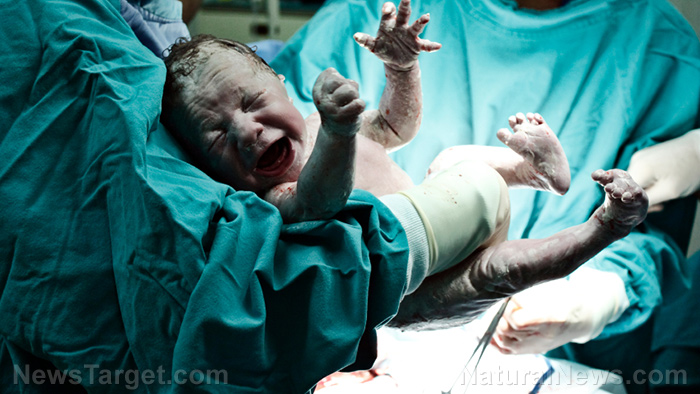
Spinal Dysraphism – causes, side effects and treatments at NaturalPedia.com
Friday, July 20, 2018 by Rhonda Johansson
http://www.naturalpedia.com/spinal-dysraphism-causes-side-effects-and-treatments-at-naturalpedia-com.html

Spinal dysraphism is more commonly referred to as tethered cord syndrome and describes a functional disorder relating to the fixation (tethering) of tissue on the spinal cord. The condition causes the inability of patients to move properly and grow correctly. It is diagnosed at infancy, with affected children observed to be at a higher risk of developing various neurological disorders as they grow older. This is due to the fact that the inelastic tissue inhibits proper stretching and development as the child ages.
Some individuals display tethered cord syndrome at birth (and are therefore classified to be a congenital case). Most, however, display their symptoms at early infancy, although its overarching signs may not be noticeable until adulthood. It is for this reason that many medical professionals describe spinal dysraphism as a developmental disorder that is progressive unless treated early, usually with surgery.
Whether caused by genetics or secondary causes, tethered cord syndrome is a serious (though rare) condition. It is hardly fatal but can influence the quality of life affected patients may have.

Known symptoms of spinal dysraphism
The condition is described to be a neurological disorder, describing an abnormality of certain tissue to develop properly in the spinal cord. In and of itself, patients with the condition will experience physical difficulties, especially those related to muscle growth.
Pathophysiologically, any form of neuronal dysfunction affects the brain in the long run – often inhibiting the proper flow of oxygen supply to the brain and to other body systems. In spinal dysraphism, particularly, patients are at an increased risk of various neurological disorders associated with the poor metabolic activity of the spinal cord.
It must be noted that the abnormal tension of the spinal cord caused by the inelastic tissue increases over time. Symptoms may progress slowly or manifest quite quickly – there are no set rules on how these appear. Certain activities such as flexing may place additional tension on the spinal cord and worsen the condition.
Body systems harmed by spinal dysraphism
The disorder primarily affects the spinal cord but may expand to include all systems. There is a notable association between tethered cord syndrome and brain function.
Food items or nutrients that may prevent spinal dysraphism
To this day, neurologists are uncertain why this disorder develops. Most literature leans heavily on genetic factors (i.e. the condition finds substance whilst in the womb), but no data (as of yet) clarifies exactly why this happens. As such, it is difficult to recommend food items or nutrients that can prevent the disorder.
Pregnant women are highly encouraged to follow a proper diet, one that includes the consumption of green, leafy vegetables and the reduction of sugary drinks and processed food.
Treatments, management plans for spinal dysraphism
Surgery is the most prescribed treatment option for children. The recommendation is made to prevent or reverse the progressive neurological symptoms, especially as the patient is still young enough to recover relatively easily. The type of surgery will depend on the mechanical causes of the inelasticity (e.g. myelomeningocele, dermal sinus, etc.).
Adults with mild cases may be advised more conservative treatment, including some type of physical therapy.
Where to learn more
- Study: Vitamin D deficiency linked to recurrent inflammatory spinal cord disease
- CancerCauses.news
- Medicine.news
- Health.news
- Turmeric.news
- NaturalCures.news
Summary
Spinal dysraphism is also known as tethered cord syndrome.
It describes the formation of inelastic tissue around the spinal cord.
It is most likely genetic, but can be caused by secondary factors such as childhood trauma.
Without treatment, it impairs physical development and growth and can cause various neurological disorders.
Surgery is the most effective way of treating the condition.
Sources include:
Tagged Under: Tags: Spinal dysraphism, tethered cord syndrome





